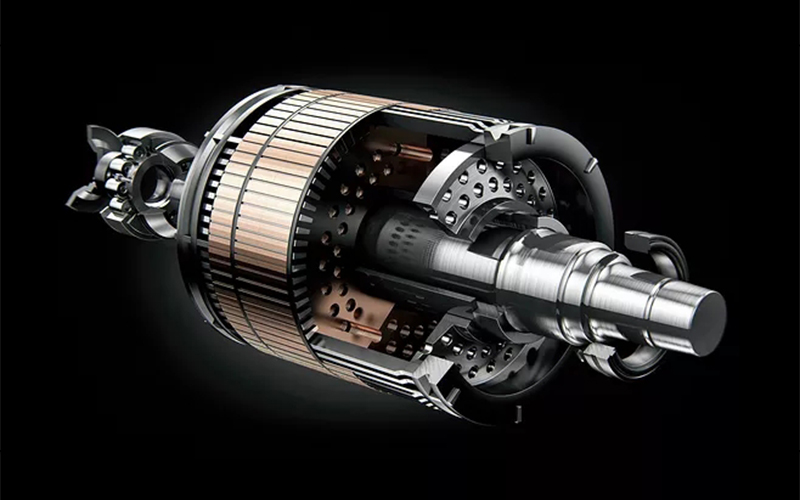The area where the engine block castings are prone to sand is the edge of the outer mold or the inside of the core, where the metal remains liquid for a long time due to the geometry of the block and small castings, and this part of the model is highly heated. The defect may occur in all castings made using the sand mold method (especially the wet sand method) and is not material dependent, as a result of physical or chemical interaction between the composition of the liquid metal and the molding material.
The close connection between sand and penetration
The melting phase of coke sand (sintering) and clay sand is the result of the reaction between metal and molding materials. Defects in castings are visible to the naked eye. It is impossible to distinguish clearly between the penetration defect and the sand-clay defect. Clay is often present after penetration and sintering. In summary, even if it does not lead to obsolescence, the sand will significantly increase the amount of cleaning required.
Formation causes
The wetting stress is affected and the osmotic pressure (see osmotic) decreases under the current metal static pressure, which significantly intensifies the osmotic action on the casting. On the other hand, under the action of the oxygen in the cavity and the pores between the molding materials, the melting phase of silicate layer (clay sand) may be formed due to the reaction between the metal and the molding materials.
Factors affecting the
According to the following reaction process, the breakdown products of silica sand and clay react with metal oxides (such as FeO) at high temperature to form low-melting positive silicate.
Is iron silicate
The iron oxides produced in this process can moisten the molding material better than metal iron, increasing the possibility of sintering and combustion. In general, the formation of mesophase can be predicted during the reaction between metal and molding materials. These phases differ according to the wettability and reactivity of the components. The penetration of the aforementioned metallic vapors increases the likelihood of sand adhesion.
The following is an example of engine cylinder block casting:
1. Mechanical sand in the narrow inner cavity
The water chamber of some cylinder blocks is designed with a water supply structure between the cylinder cylinders. Some of the water supply structure is narrow and thin. According to this structure, the sand core is designed with a thin section structure.
The water jacket of the four-cylinder machine has three over-water structures, with a span of 17mm, a height of 80mm and a thickness of 4mm in the middle section. The two slices on both sides are only 40mm in height and 3mm in thickness.
Anatomical examination of the cylinder block castings revealed that the water-over-structure was accompanied by sand and notch at the height of 40mm on both sides
2. Cause analysis of sand adhesion and notch
The gap is caused by the compressive stress (extrusion) and the insufficient strength of the sand core caused by the expansion of the thin section of the water sleeve core during casting.
The appearance of sticky sand is caused by the deformation of the sand shape and the insufficient density of the sand grains in the thin section. In FIG. 1, it is difficult for sand particles to enter the thin section of sand core due to the narrow space in the mold during core shooting. Moreover, the surface area and volume of the narrow space are relatively large, the hot core mold heats the coated sand rapidly, the coated sand is cured early, and the fluidity is lost quickly, resulting in the difficulty of filling sand particles and the difficulty of compacting.
3. Solve the sand-sticking measures
We use baozhu sand as the original coated sand to make the water sleeve core for the following reasons:
3.1 the true density of baozhu sand is large. The kinetic energy of sand particles with the same diameter and the same rate during core shooting is 1.28 times that of silica sand particles, which can improve the density of sand core. According to the osmotic pressure formula of mechanical sand adhesion: P=2 cos /r (where is the surface tension of the metal liquid, the wetting Angle between the liquid metal and the cast, and r is the pore radius of the cast), the pore radius r between the sand particles of the dense sand core is small, which can resist the sand adhesion.
3.2 the round shape of baozhu sand can improve the fluidity of coated sand. In the core-shooting process, the sand particle resistance is small and the kinetic energy loss is low, so as to ensure the filling effect of the core-shooting, so as to reduce the pore radius r between sand particles and resist the sand-sticking.
3.3 low thermal expansion of baozhu sand can reduce the pressure borne by the thin section sand core at high temperature and improve the stability of the thin section sand core at high temperature.
3.4 baozhu sand has a large specific heat capacity. Under the condition of the same volume, it can absorb more heat of molten iron, weaken the fluidity of molten iron, and encrust earlier, thus resisting sand adhesion.
4. Implementation effect of the measures
Inspection after casting found that the problems of sand sticking and notching were eliminated.


 Page location :
Page location : 

